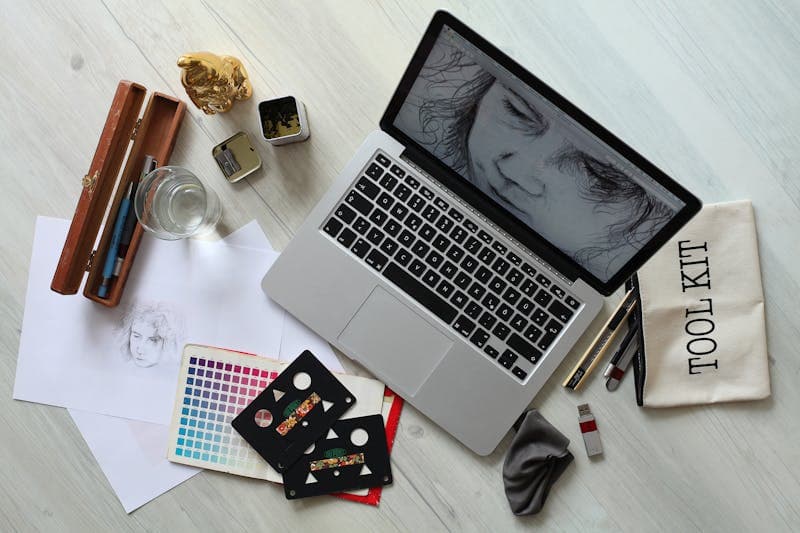In the world of design and creativity, there is always the danger of mistakes. Often, great ideas don’t end up as planned, and these failures can leave a negative mark on a brand’s reputation. However, there is a learning potential in every failure. By analysing design failures, we can uncover valuable lessons that can help us improve our own creative processes. This article will look at some of the most famous design failures and their impact on modern design.
Definition of a failure
Design failures can take many forms: from failed advertising campaigns to products that failed to meet consumer needs. It can also be the wrong choice of colours, inappropriate fonts, or even ridiculous ideas that didn’t generate the expected interest. Regardless of what they look like, these failures provide an opportunity to analyse what went wrong and how to avoid similar mistakes in the future.
Case 1: Pepsi vs. Coca-Cola
One of the most famous examples of a design failure is the Pepsi campaign in the 1990s. At a time when Coca-Cola was an almost invincible giant, Pepsi decided to launch a new packaging for its drinks, which was supposed to symbolise freshness and modernity. However, the new design was criticised for being too similar to Coca-Cola’s packaging, and many consumers felt that Pepsi was trying to imitate its competitor. As a result, the company had to revert to a traditional design, which was a lesson in the importance of uniqueness in design and marketing.
Lessons from failure
1. Understanding the target audience
One of the key reasons for design failures is the inability to understand the target audience. Designers need to take into account the tastes, preferences and cultural characteristics of their consumers. Knowing how your target audience perceives colours, fonts, and even shapes can help you avoid many mistakes.
2. Uniqueness and originality
As the Pepsi example shows, trying to copy or imitate other brands can lead to disaster. A unique design not only makes a product stand out from the competition, but also forms the brand’s identity. It is important to create something new rather than follow trends that can change quickly.
3. Test iterations
Before releasing the final product, it is worth testing several design iterations. This can be useful not only for getting feedback from your target audience, but also for identifying potential problems. For example, new packaging or graphic elements can be tested in focus groups to find out how they are perceived.
On the Legjobbkaszino website, where experts review casinos, you can find great examples of ideas that have been implemented based on these lessons. This shows the importance of feedback and evaluation in the design process to avoid repeating mistakes that have already been identified.
Case 2: ‘Gap Logo Change’
Another vivid example of failure is the Gap logo change in 2010. The brand decided to switch to a new, more modern logo, but consumers did not like the new design. After numerous negative reviews, Gap was forced to revert to its classic logo just a week later. This case shows how important it is to take into account consumer reactions to design changes.
4. Collaboration with specialists
Collaboration with specialists from different fields is an important stage in design. Designers, marketers and communications experts can help create a product that not only looks good, but also has the right message and impact on the target audience. Bringing in a variety of perspectives can be key in the process of achieving success.
Case 3: ‘New Coke’
In 1985, Coca-Cola decided to change its classic formula by introducing New Coke. However, consumers reacted with outrage, feeling that their favourite drink had been destroyed. The company quickly responded to the negative feedback by bringing back the old formula under the name Coca-Cola Classic. This example illustrates the importance of maintaining tradition in design, especially when it comes to well-known brands.

5. Flexibility and adaptation
Designers should be prepared to adapt to changes in consumer demands. For example, during the COVID-19 pandemic, many companies have changed their strategies and designs to respond to new realities. This may include new packaging options, increased online sales, or changes in communication strategies.
On the Revolut casino page, you can read all the useful tips about this casino. This site offers useful resources that can help designers and entrepreneurs learn more about the changes in the market and adapt their strategies to the new conditions.
Conclusion.
Design failures are not only disasters but also learning opportunities. They offer important lessons about the importance of uniqueness, understanding the target audience, and the need for flexibility in a rapidly changing world. Every failure has the potential to become a step towards success if we are willing to learn from mistakes and adapt to new realities. Ultimately, understanding these lessons can significantly improve our creativity skills and increase our chances of success in design.




